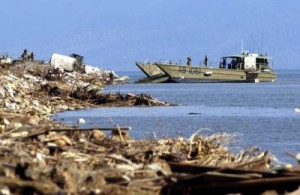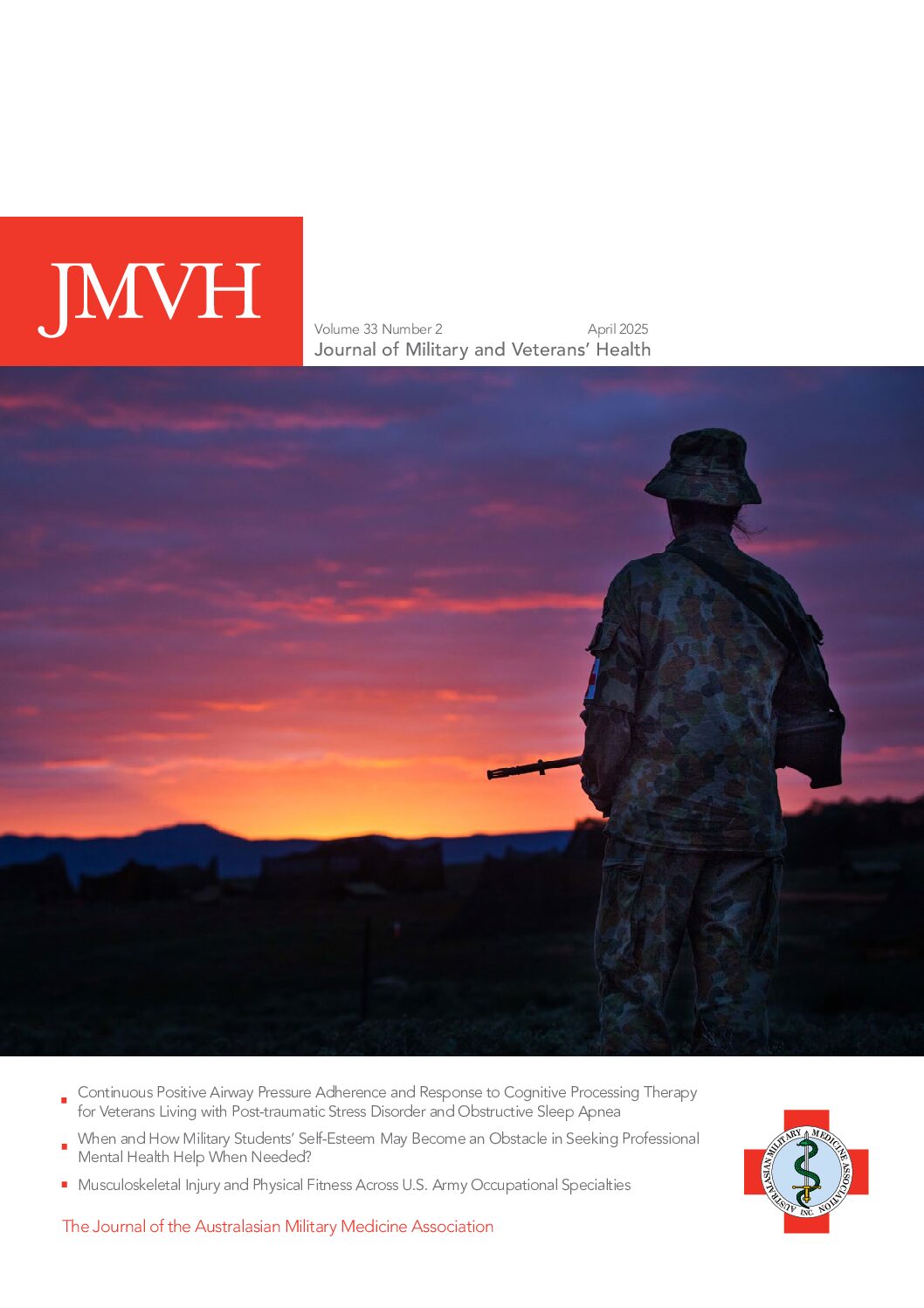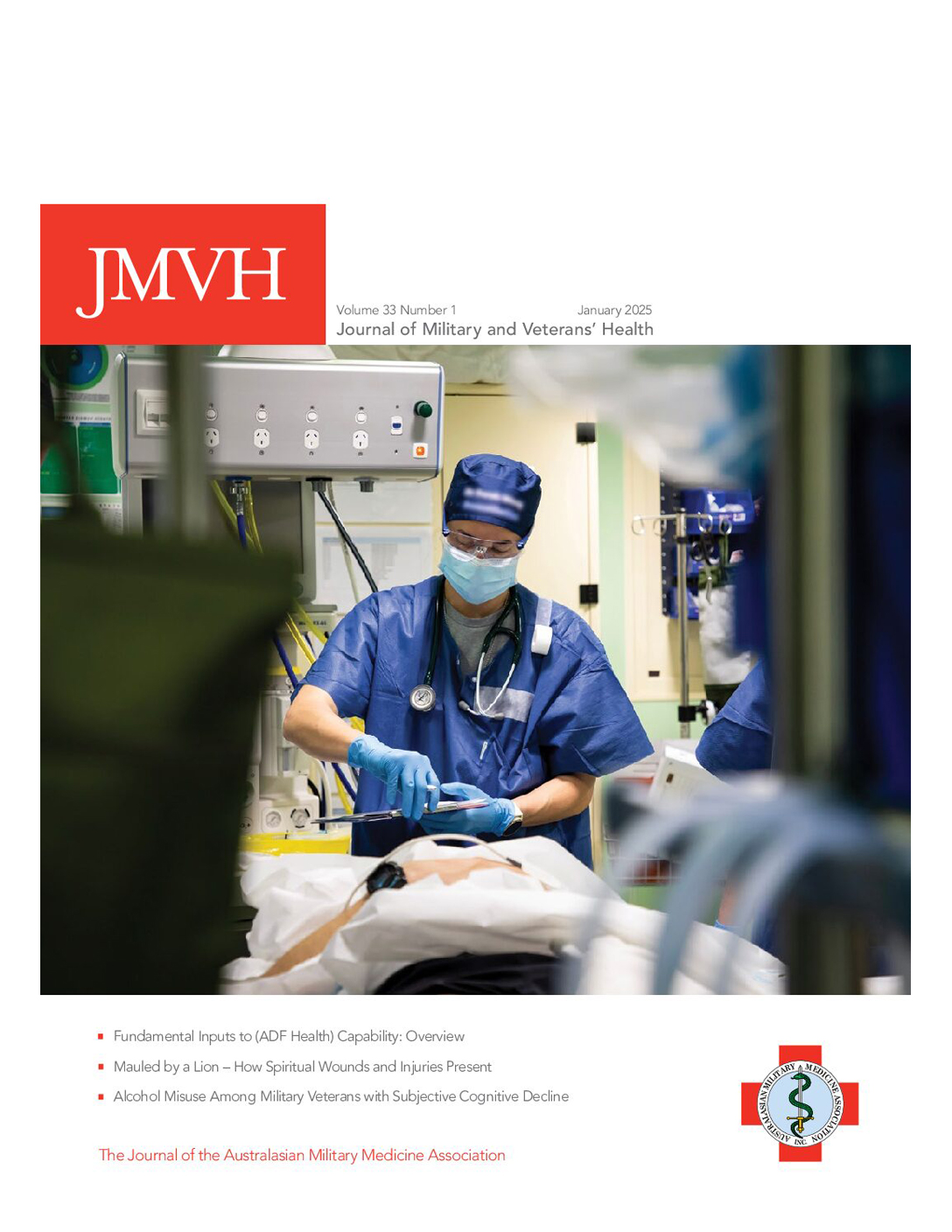 ADF operations are planned and executed in line with the government’s and the Operational Commander’s requirements. War fighting operations focus on winning the battle while health support is tailored to fit into this essential primary need. Recent ADF operations, however, have included tasks other than war (OOTW) such as OPERATION SUMATRA ASSIST ONE and TWO.
ADF operations are planned and executed in line with the government’s and the Operational Commander’s requirements. War fighting operations focus on winning the battle while health support is tailored to fit into this essential primary need. Recent ADF operations, however, have included tasks other than war (OOTW) such as OPERATION SUMATRA ASSIST ONE and TWO.
OPERATION SUMATRA ASSIST TWO was unusual because the primary aim of the operation was the provision via amphibious over the shore methods, of public health, engineering and acute medical services to the Indonesian communities affected by the Nias Island earthquake of March 2005. Rather than being support elements, these capabilities became the core business of the operation.
On Tuesday 29 March at 0210 AEST an earthquake measuring 8.7 on the Richter-Scale struck the Island of Nias off the west coast of Sumatra. Subsequently the Government of Indonesia estimated that there were 676 deaths and 25,335 people injured as a result of the earthquake and aftershocks. HMAS KANIMBLA, alongside in Singapore, was immediately ‘crash sailed’ and ordered to return to the designated Area of Sumatra following Operation Sumatra Assist 1. A Tri-Service team of full-time and Reserve health professionals was deployed to augment elements of the RAN Primary Casualty Reception Facility (PCRF) still on board KANIMBLA. In light of concerns over sea bed changes and available safe anchorages following the earthquake, the Deployable Geospatial Survey Team of the Hydrographic Meteorological and Oceanographic Force Element Group was also deployed. In addition, a cadre of interpreters was embedded in the PCRF complement.
The initial Concept of Operations was to position KANIMBLA tactically near areas of population damage on the island and via an RAN liaison and medical triage officer ashore, airlift patients to the PCRF for initial surgery via the embarked Sea King helicopters of 817 SQN. This triage role, performed by CMDR Geoff Day, RANR, ensured the finite resources of the PCRF could be best applied to those patients whose initial care was feasible and sustainable, prior to transfer back to civilian authorities ashore. While all forms of acute life saving surgery were incorporated into the scope of surgical operations, other injuries requiring prolonged convalescence and rehabilitation were referred to Non Government Organisation (NGO) health facilities. It was also recognised that to facilitate the patients’ care and their understanding of what was happening, family members should accompany the injured onboard KANIMBLA, thus incurring the additional duty of care to these individuals. Pivotal to this process were the presence of interpreters deployed with the PCRF personnel. The importance of this capability cannot be overstated. These personnel dramatically improved the safety, quality and efficiency of PCRF activities.
Upon KANIMBLA’s arrival in the AO late on Friday 01 April 2005, NGO aid agencies were in place and were providing experienced and professional disaster relief services. The initial liaison between the Commanding Officer of HMAS KANIMBLA and local authorities indicated multiple population areas affected with continuing reports of severely injured people isolated from acute medical care due to the destruction of roads. By early Saturday morning several patients had been transferred to the PCRF, where life saving surgery commenced immediately. Until the arrival of the United States Navy Hospital Ship, USNS COMFORT on 08 April, HMAS KANIMBLA provided the most advanced health capability in the Area of Operations. Prior to KANIMBLA’s arrival serious cases were flown to Sibolga after stabilisation at the Singaporean Field Hospital.
In response to reports of multiple severely injured people at the town of Amandraya, the aero medical evacuation (AME) component of the PCRF was dispatched to investigate on the afternoon of 2 April. The subsequent crash of the Sea King Shark 02 is now the subject of a Board of Inquiry.
The loss of the AME team and the requisite cessation of flight operations by the other embarked Sea King altered the tempo of operations. KANIMBLA’s difficulty finding a safe anchorage and local conditions that limited the use of the embarked LCM8s, required all subsequent patient transfers to be undertaken by boat. This reduced the rate of transfer from island to ship and increased the complexity of embarkation for injured patients. Despite these constraints an evolution was devised that combined the skills of sailors at the helm of the ship’s RHIB, the ship’s medical contingent and PCFR personnel whereby the boat was lifted into its cradle and the casualties carried on stretchers to the resuscitation bays in the hanger. The unbroken and ongoing provision of care to the Indonesian population was a reflection of the dedication, ingenuity and increased intensity of effort by the entire ship’s company in the face of adversity. Over the following days the number of acute casualties progressively declined. The caseload was distributed between the Singaporean field hospital ashore, NGO health facilities and the USNS COMFORT. After this time the focus shifted from acute health services to primary care and public health activities.
The Deployable Geospatial Survey Team continued its work assessing the sea bed and likely anchorage points while engineering elements from KANIMBLA began repairing infrastructure damaged by the earthquake. The embarked LCM8s were utilised in many ways, including delivering rice to subsistence populations who, isolated by the damaged transport infrastructure, were often running very short of food. The diverse, immediate and critical needs of the affected populations required a whole-of-ship response. This was demonstrated by the deployment of PCRF personnel ashore, while elements of KANIMBLA’s crew toiled in demanding conditions elsewhere, shifting 133 tonnes of rice by hand, and repairing the water supply to isolated towns. This all took place whilst the ground still moved from earthquake aftershocks! The combined nature of these efforts by service personnel remains the great story of OPERATION SUMATRA ASSIST TWO.
For the PCRF personnel, operations were now restructured around teams of five to 10 personnel including doctors, nurses and medics, going ashore, aided by Indonesian Army (TNI) liaison officers. With the support of local Catholic nuns, small temporary clinics were established that treated a variety of chronic health ailments. Tragically, they were also confronted with some severe chronic illnesses including heart failure and terminal neurological disease. For these individuals only limited care could be provided and local health services alerted. The clinics, however, were so popular, with hundreds of people attending, that extra support was required from the ship’s company. One such response was the delivery of OPERATION KINDERGARTEN COPS. This activity provided personnel to play with and entertain the children thus allowing the health personnel to systematically attend to as many people as possible. These clinics continued over several days culminating in the ship’s company returning to Amandraya.
Over a two-day visit to Amandraya, more clinics were conducted and a memorial was built to honour our fallen comrades. Approximately 70 metres from the crash site, a Sea King rotor tail blade was set in the ground and the PCRF badge with its motto ‘Care Afloat’ affixed to the blade. Soft Rank Insignia of the RAN Medical branch and RAAF Health Wing were also attached. This final act finished OPERATION SUMATRA ASSIST TWO and KANIMBLA departed the next day for Singapore.
The efforts of the crew of HMAS KANIMBLA included the following:
Humanitarian Aid Stores Delivered
- 133 tonnes of rice and 5000 litres of water
Medical
980 patients treated ashore within Primary Health Care Team clinics; 13 surgical and further treatments conducted in KANIMBLA; Seven patients evacuated from ashore by SK50 to other medical facilities; and 83 X-Rays/Ultrasounds conducted in the first 48 hours on station.
Other
- Lahewa town water pumps repaired;
- Lahewa town generator repaired;
- Four beach and anchorage surveys completed and significant geodetic data collected on the geospatial consequences of the earthquake;
- Eight family members of patients cared for in KANIMBLA while patients underwent procedures; and
- Hundreds of smiling faces – Operation KINDERGARTEN COPS entertained hundreds of children in Lahewa with various activities including attempts at teaching them to play cricket and Aussie Rules Football.
HMAS KANIMBLA proved herself to be a highly potent and resourceful platform providing mobile amphibious health and engineering support to disaster-affected communities. It reinforced the maritime operational concept of sustained and effective ‘poise’ with a minimal infrastructure impact on foreign territory.
This operation was a typical example of ‘capability bricks’ building Joint operations. HMAS KANIMBLA and its organic logistic and engineering elements provided the platform, which in turn allowed the PCRF to deliver health care. This care was improved significantly by the embedded cadre of interpreters. The Deployable Geospatial Survey Team conducted surveys and were able to provide data on the scarce anchorage points available while also contributing to the knowledge of geospatial sea bed effects following the earthquake. The combined operational effect of all elements added to the positive strategic effects of Australia’s Humanitarian involvement in South East Asia.
Sadly it came at the cost of nine of our colleagues. Their lives, loves, aspirations and service will forever represent our nation’s integrity in times of need. They remain always…our shipmates.






